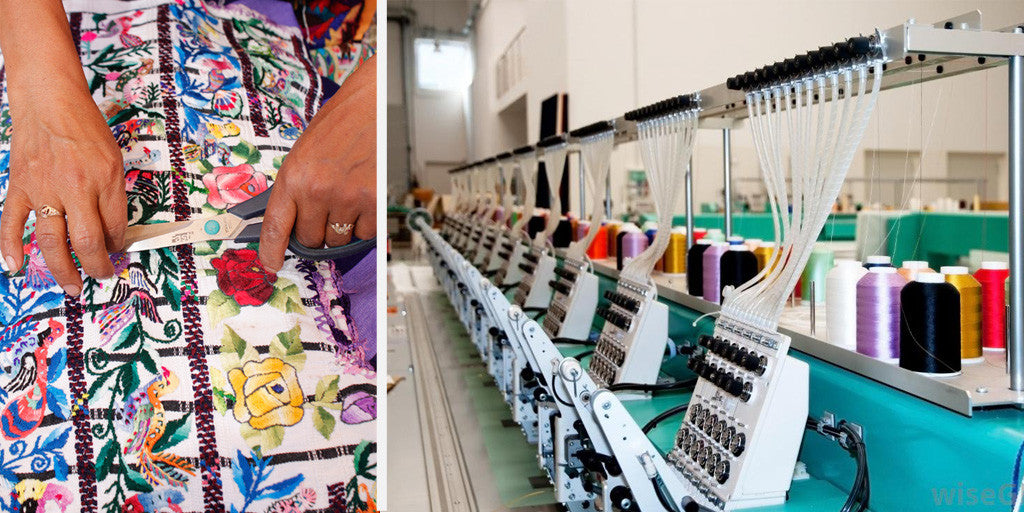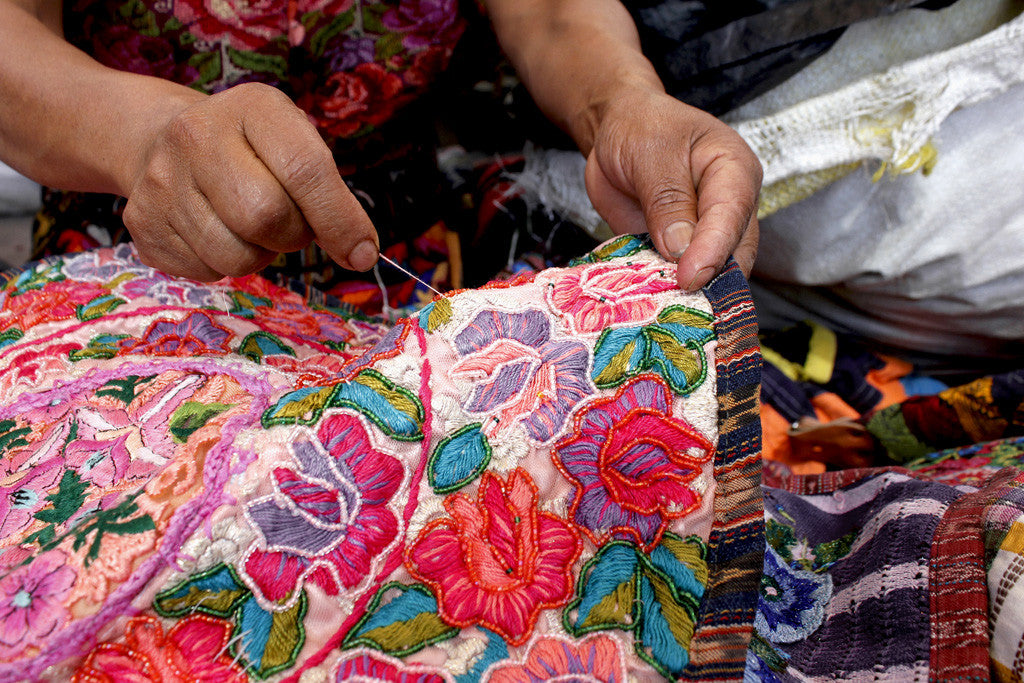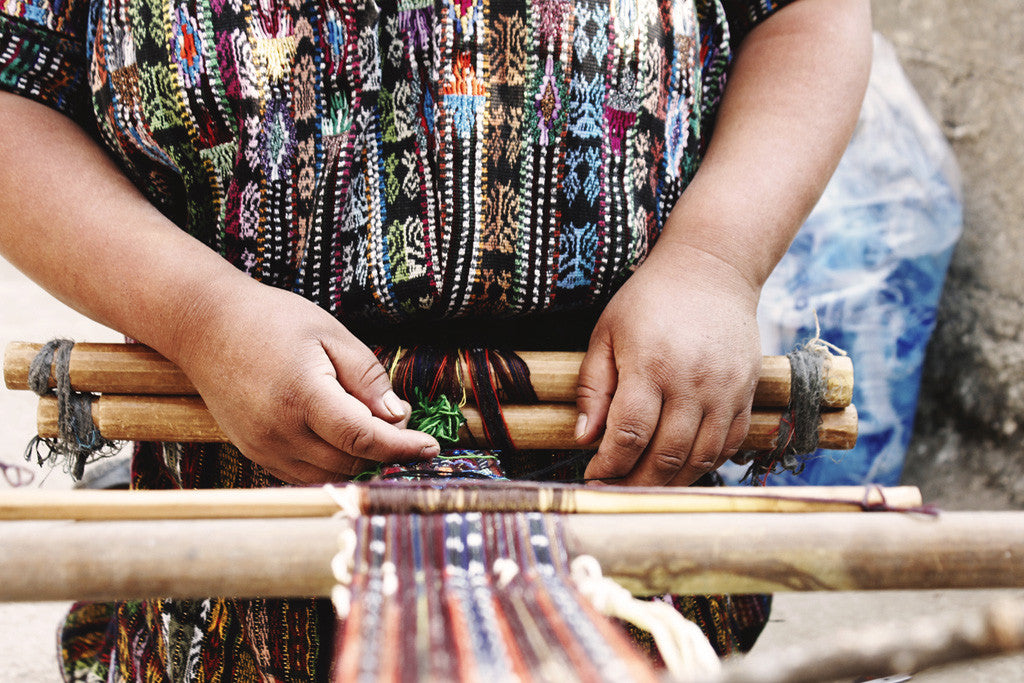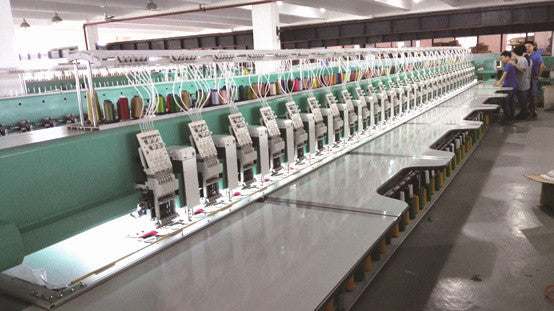Why our Guatemalan partners are slaying this trend!

Around the globe, authentic indigenous garments aren’t trendy. They are born out of centuries of tradition and skill and don’t disappear with the next season’s fads.
In Guatemala, bold textiles are more than just a trend; they’re a way of life. Maya weavers in rural Guatemala have been making textiles for centuries. Stone carvings in the ancient Maya cities show traditional garments remarkably close to the ones still worn today.

Now that embroidery is “on trend” in the US fashion scene, we knew this season was our time to showcase what our artisan partners are capable of! They are, after all, the best. With generations of experience, you could say the traditional art form is in their blood.
Nearly all of the embroidery you’ve ever seen is created by computerized machines. The beautifully intricate bordado that Guatemala is famous for is almost always entirely by hand--and you can easily tell when it’s not.

For generations, the tradition of weaving has been passed down from mother to daughter, connecting the learner with her ancestors who came before her. The traditional Guatemalan three-piece dress--huipil blouse, faja belt, and corte skirt--is still worn by many Maya women today, especially in rural communities.
To weave and wear these garments is incredibly symbolic according to Maya tradition. When laid flat, the head hole becomes the symbolic sun, surrounded by the four directions of the earth and sky. The wearer is therefore placed at the center of the universe, with sacred space and time radiating from her head, across her arms, and down her body. ("El Huipil.” Mexico City: Artes e Historia México magazine.)

While the traditional Maya woven textiles are pre-hispanic, embroidery is a slightly newer development. During the conquest, the Spanish imposed uniform-like restrictions on Maya populations, in an effort to clothe and control them. In small acts of resistance, Maya weavers put their own ornate flair on these garments. Instead of being a mere indicator of geographical origin, traditional dress, particularly the huipil blouse, became a source of pride and identity for different Maya groups.
Due to limitations of natural dyeing techniques, the majority of very old huipiles only feature shades of red and white. With the arrival of the Spanish came synthetic dyes that had produced a much larger variety of colors that are famously characteristic of Guatemala to this day.

Every article of clothing features detailed patterns with meaning specific to the region where it comes from. For example, many of the huipiles from around Lake Atitlan feature shades of blue and green. The Maya people turned the assimilative restrictions of the conquistadores into something beautiful and meaningful.
Garments indicate community of origin above all, but may also provide clues about social and marital status. There are special garments and accessories reserved for ceremonial purposes. Each design decision is full of meaning in addition to being exceptionally beautiful. Textile motifs celebrate life, showing harmony with nature and the cosmos by use of colors and symbols.
Now that embroidery is “on trend” in the US fashion scene, we knew this season was our time to showcase what our artisan partners are capable of! They are, after all, the best. With generations of experience, you could say the traditional art form is in their blood.
With the exception of the embroidery hoop wall art at your grandma’s, nearly all of the embroidery you’ve ever seen is made by computers. There are several different kinds of sewing machines that can do embroidery, like basic home machines used by hobbyists and manually-controlled machines for small scale commercial operations.

Retail giants use fully computerized machines in the large-scale factories where their apparel is made. These machines have multiple heads, meaning that they stitch several items at a time, drawing from the same computerized template. Each head has multiple needles, one for each color of thread. The fabric is secured beneath the head and then the template design file dictates how the fabric and the needles are moved to properly reproduce the artwork.

Unlike those companies, Hiptipico’s artisan partners do only hand-stitched embroidery with the occasional help of a small home sewing machine. Our artisan partners create their designs through a combination of memory and their own creativity. Our hand-embroidered pieces outshine their mass-produced competition and as an added bonus, carry with them the story of their makers.

Weaving and embroidery knowledge and skill is dying out as women move out of the home and into the workplace. Unfortunately, many women can no longer afford to practice this skill, as it is more realistic to get a job in agriculture or hospitality. Although we welcome this social progress, many fear that it comes at the expense of losing these cultural traditions and art forms. For Hiptipico, turning these skills and flexible working conditions into living wage jobs for women is ideal.
When curating our 2017 collection, we were looking for new styles that really show off the incredible artistry of our partners--and they didn’t disappoint! Each of them was so excited to try out something new. The tourist market in Guatemala is very saturated so being able to offer new designs is a huge advantage for the small businesses that we support. And for us, being able to offer our global customers new, on-trend styles is a win-win.
Shop New Arrivals from our 2017 Festival Collection now!
← Older Post
Newer Post →
















